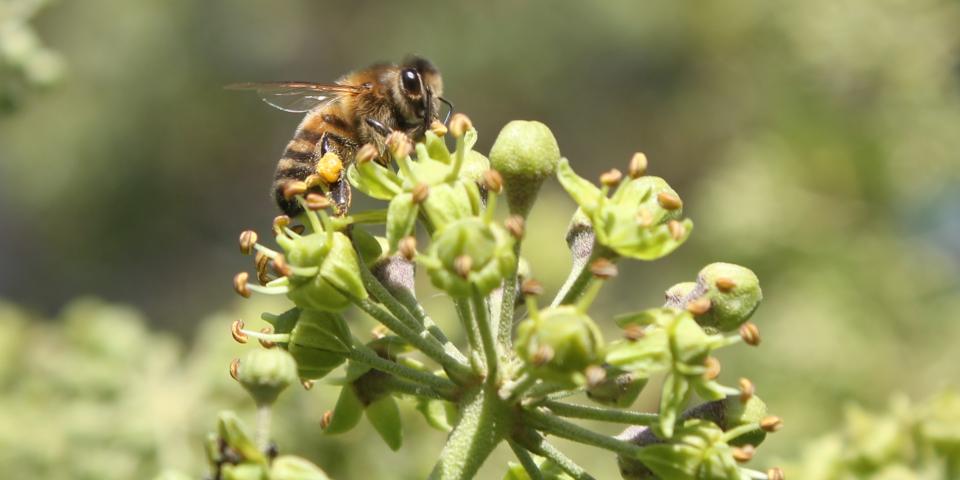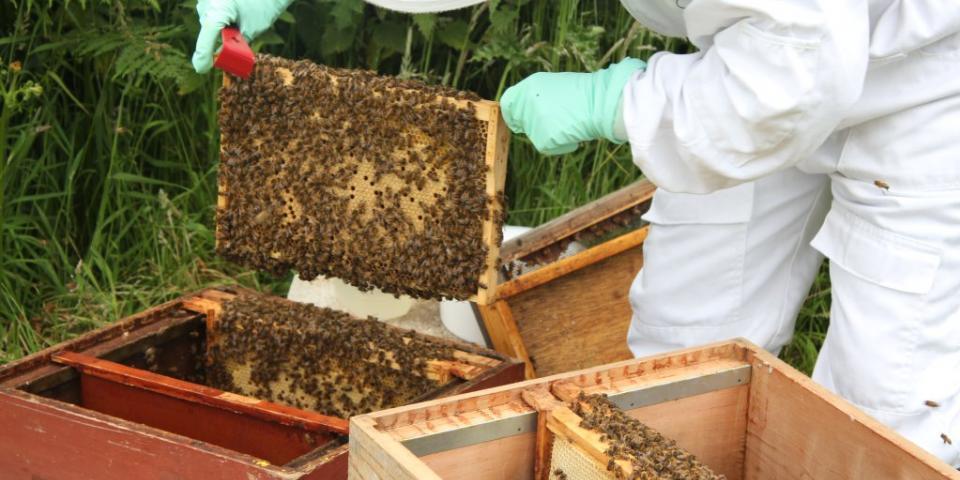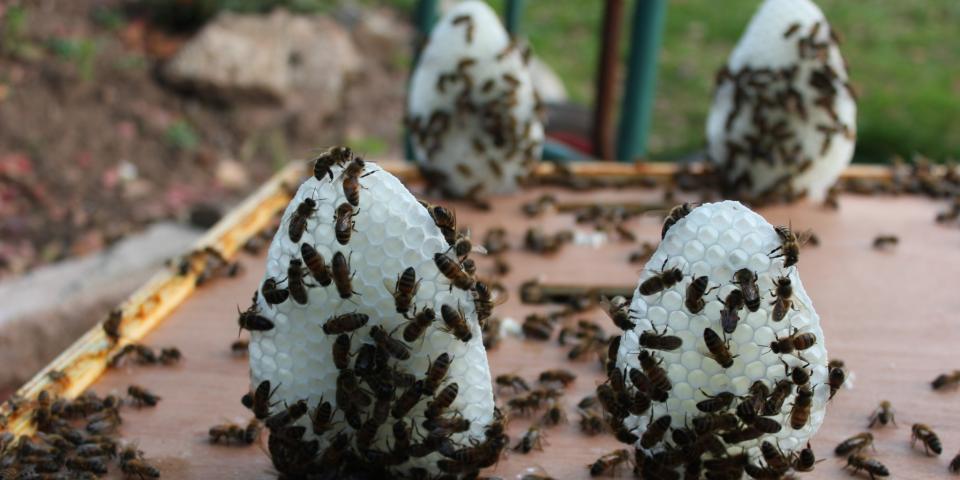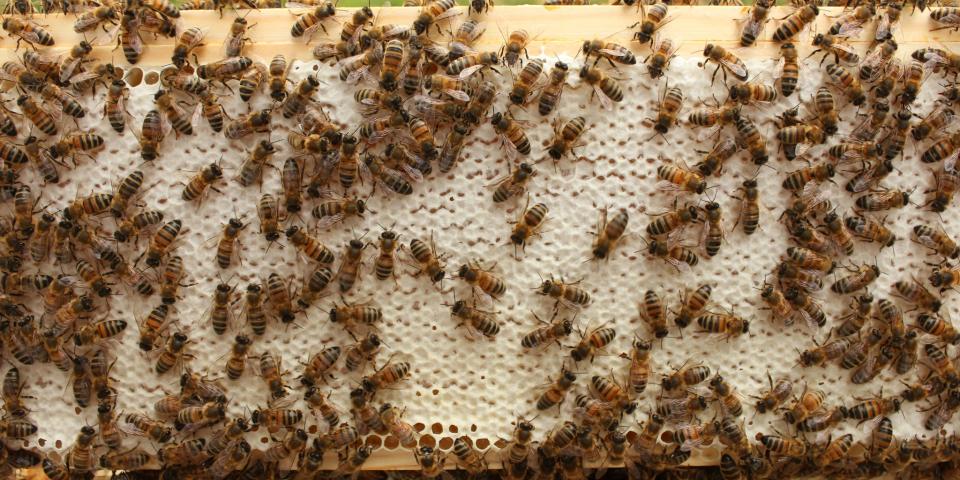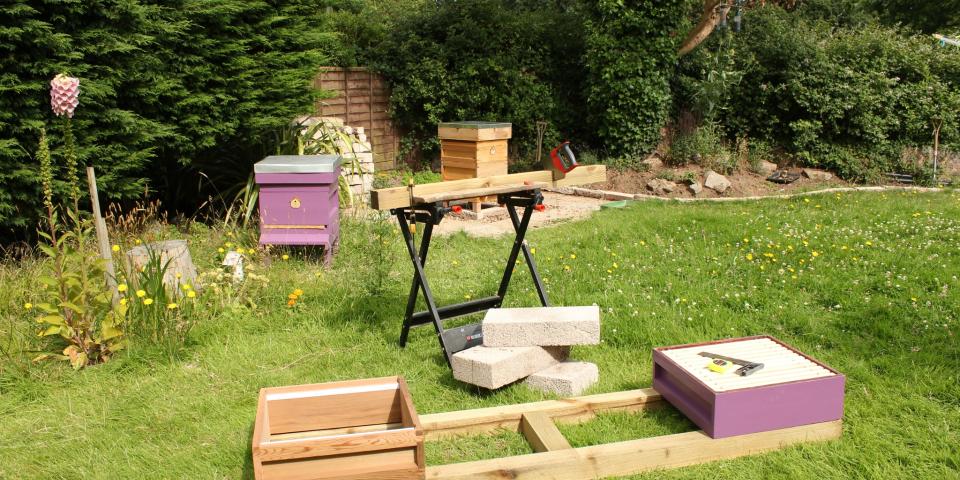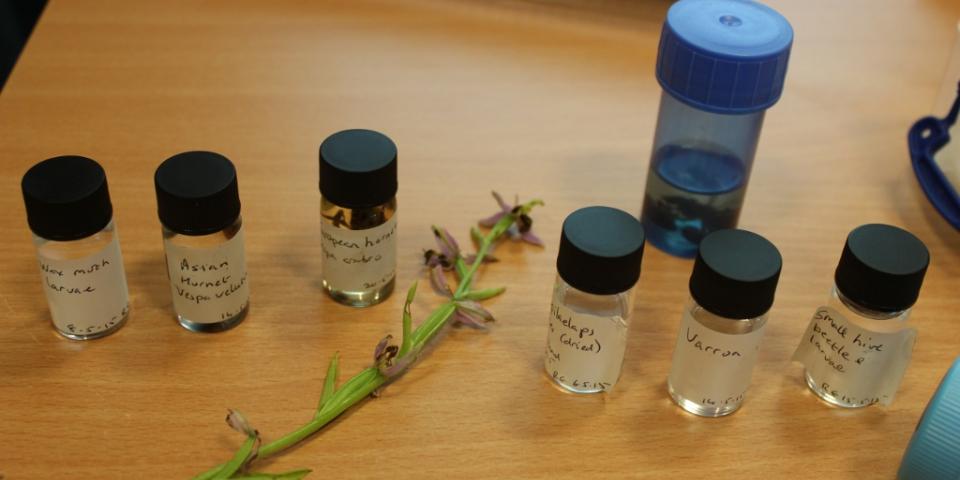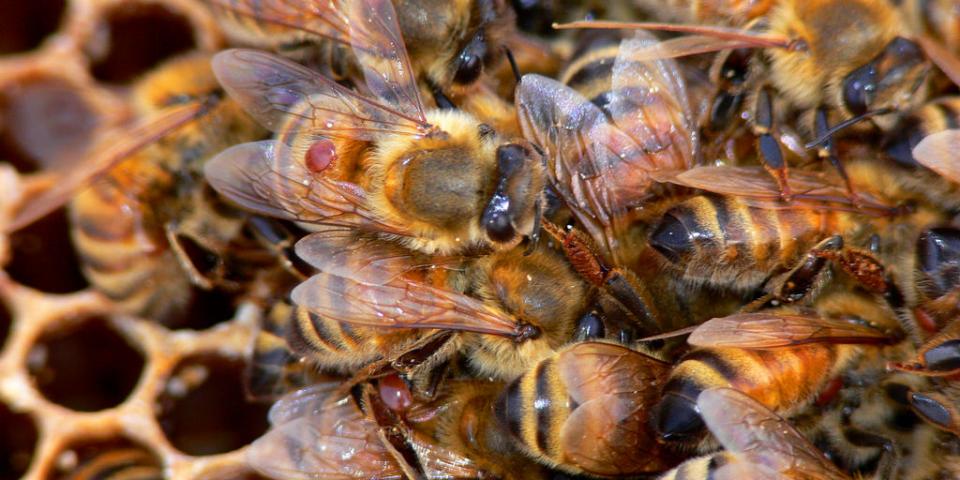- Posted By: beekeeper
- Comments: 0
Honey and ivy
It's late September, the sun is shining and taking a walk around Budleigh Salterton, I don't have to go far before I see flowering ivy that has attracted a wealth on insects, including honey bees. This creeping plant, which produces flowers in the autumn, is the last source of natural food before the girls will start to hunker down for the winter months. Before setting off, I looked across at the hive and saw a lot of activity around the entrance which means they were on a mission to bring back stores for the colony.

